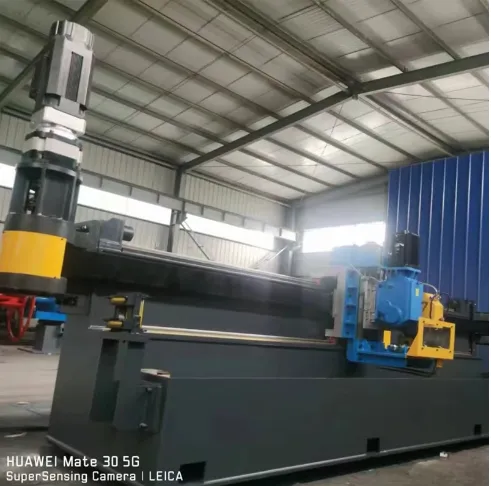Flying Saw: Precision Cutting Solutions
A flying saw is an advanced cutting tool widely used in various industries, especially in metal and pipe manufacturing. Whether you're searching for a cold cut flying saw, exploring options from a flying saw factory, or seeking to understand its applications, this guide covers the key aspects of this versatile machine.

What is a Flying Saw?
A flying saw is a cutting machine designed to cut materials, such as pipes, tubes, or profiles, while they are in motion on a production line. Unlike stationary cutting tools, it moves synchronously with the material, enabling precise cuts without stopping the production process.
Cold Cut Flying Saw: A Specialized Tool
A cold cut flying saw is a type of flying saw that uses a circular blade to cut materials without generating significant heat. This method is particularly beneficial for:
-
Preserving Material Properties
-
Prevents heat-induced damage or warping.
-
-
Clean Cuts
-
Delivers burr-free and smooth edges.
-
-
Enhanced Safety
-
Reduces the risk of burns and thermal hazards.
-
Features of a Flying Saw
-
Synchronized Motion
-
Matches the speed of the moving material for accurate cuts.
-
-
High Precision
-
Ensures uniform cutting across batches.
-
-
Versatility
-
Suitable for various materials like metal, plastic, and wood.
-
-
Automation
-
Often equipped with programmable controls for efficient operation.
-
-
Durability
-
Designed to handle high-speed production environments.
-
Applications of Flying Saws
-
Metal Pipe and Tube Manufacturing
-
Cuts steel, aluminum, and other metal pipes with high accuracy.
-
-
Construction Materials
-
Used for cutting profiles, beams, and frames.
-
-
Plastic and Composite Products
-
Provides clean cuts for non-metal materials.
-
-
Automotive and Aerospace
-
Precision cutting of components for assembly lines.
-
Benefits of Flying Saws
-
Increased Productivity
-
Eliminates the need to stop production for cutting.
-
-
Improved Cut Quality
-
Delivers consistent results with minimal material waste.
-
-
Cost Efficiency
-
Reduces downtime and enhances material utilization.
-
-
Safety Enhancements
-
Automated operations reduce the risk of manual errors.
-
Choosing the Right Flying Saw
When selecting a flying saw, consider:
-
Material Compatibility
-
Ensure it can handle the types of materials in your production.
-
-
Cutting Speed
-
Choose a machine that matches your production line speed.
-
-
Blade Type
-
Opt for cold-cut blades if heat sensitivity is a concern.
-
-
Automation Features
-
Look for programmable settings to streamline operations.
-
-
Manufacturer Reputation
-
Select a reliable flying saw factorywith proven expertise.
-
Flying Saw Price Factors
The cost of a flying saw depends on several factors:
-
Type
-
Cold cut flying saws may cost more due to their advanced features.
-
-
Capacity
-
Larger machines for heavy-duty use are typically more expensive.
-
-
Automation Level
-
High-tech systems with programmable controls command higher prices.
-
Why Choose a Cold Cut Flying Saw?
A cold cut flying saw is ideal for industries requiring precision and material integrity. Its ability to deliver clean, burr-free cuts without compromising material quality makes it a superior choice for demanding applications.
The flying saw, particularly the cold cut flying saw, is an indispensable tool in modern manufacturing. Its ability to cut materials precisely while maintaining production line efficiency enhances productivity and reduces costs.
When sourcing a flying saw, consider your material and production requirements, the machine's features, and the manufacturer's reputation. With the right selection, a flying saw will significantly improve your cutting operations, ensuring high-quality results every time.


